The former Swan Hotel is situated at the Market Place end of High Street. The landmark building, with its statue of a swan atop the façade, was given a grade II listing in May 1975 and dated as ‘early to mid C19’. However, there has been a Swan drinking house on this site for much longer. The earliest reference to it is in the year 1600. The Swan soon developed into the town’s leading coaching inn and ‘posting house’, words which may still be seen on the front of the building.
A plaque documenting this history of The Swan Hotel.
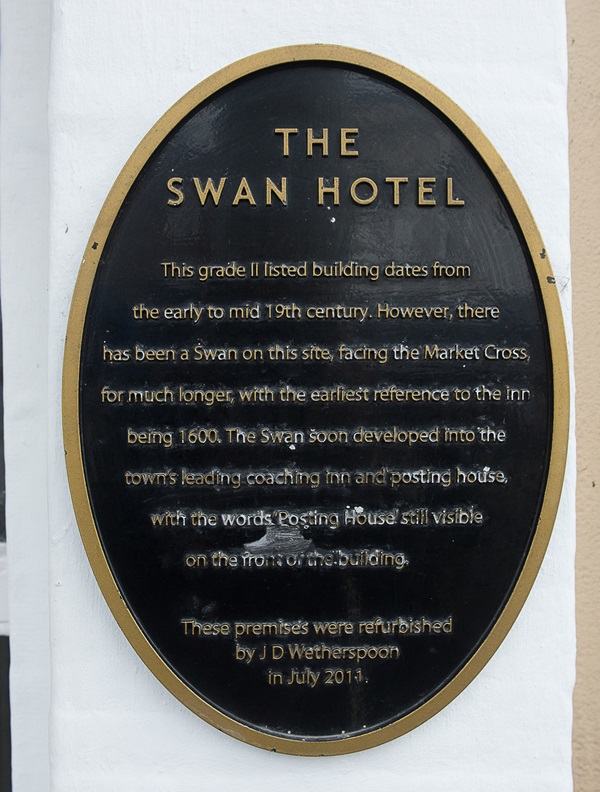
The plaque reads: This grade II listed building dates from the early to mid 19th century. However, there has been a Swan on this site, facing the Market Cross, for much longer, with the earliest reference to the inn being 1600. The Swan soon developed into the town’s leading coaching inn and posting house, with the words Posting House still visible on the front of the building.
These premises were refurbished by JD Wetherspoon in July 2014.
Prints and text about the posting house.
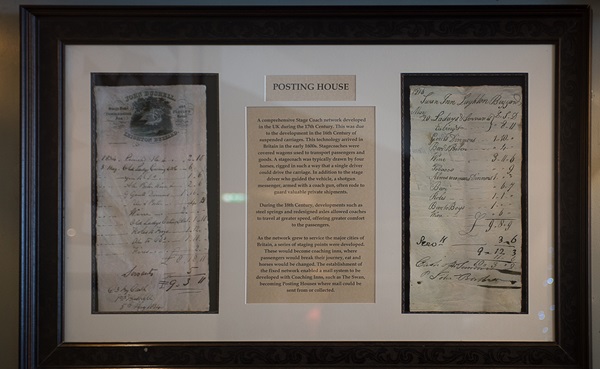
The text reads: A comprehensive Stage Coach network developed in the UK during the 17th century. This was due to the development in the 16th century of suspended carriages. This technology arrived in Britain in the early 1600s. Stagecoach were covered wagons used to transport passengers and goods. A stagecoach was typically drawn by four horses, rigged in such a way that a single driver could drive the carriage. In addition the stage driver who guided the vehicle, a shotgun messenger, armed with a coach gun, often rode to guard valuable private shipments.
During the 18th century, developments such as steel springs and redesigned axles allowed coaches to travel at greater speed, offering greater comfort to the passengers.
As the network grew to service the major cities of Britain, a series of staging points were developed. These would become coaching inns, where passengers would break their journey, eat and horses would be changed. The establishment of the fixed networks enabled a mail system to be developed with coaching inns, such as The Swan, becoming posting houses where mail could be sent from or collected.
A photograph and text about the Grand Union Canal.
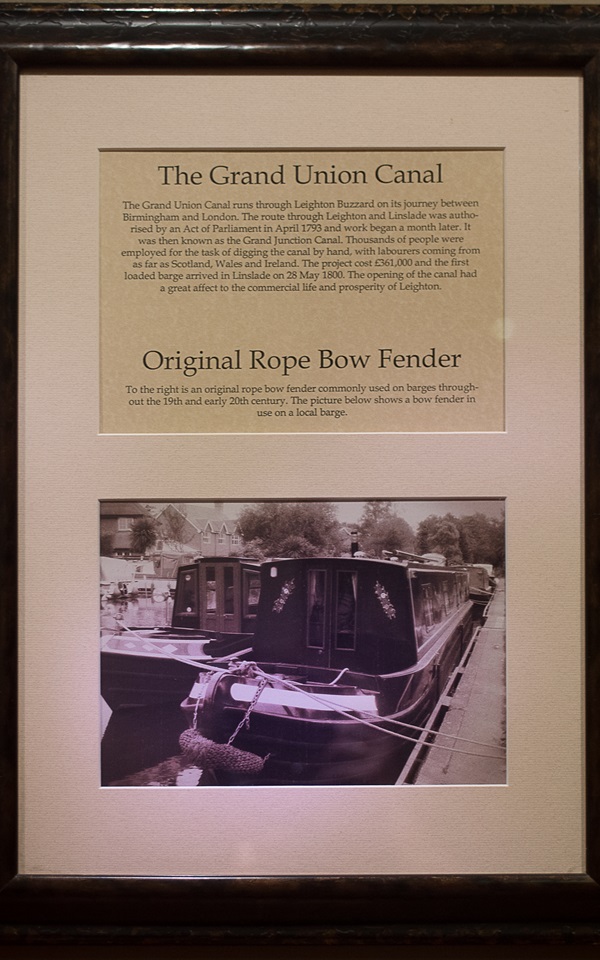
The text reads: The Grand Union Canal runs through Leighton Buzzard on its journey between Birmingham and London. The route through Leighton and Linsdale was authorised by an Act of Parliament in April 1793 and work began a month later. It was then known as the Grand Junction Canal. Thousands of people were employed for the task of digging the canal by hand, with labourers coming from as far as Scotland, Wales and Ireland. The project cost £361,000 and the first loaded barge arrived in Linsdale on 28 May 1800. The opening of the canal had a great affect to the commercial life and prosperity of Leighton.
Original Rope Bow Fender
To the rights is an original rope bow fender commonly used on barges throughout the 19th and early 20th century. The picture below shows a bow fender in use on a local barge.
A photograph of the Leighton Buzzard Light Railway, which opened in 1919.
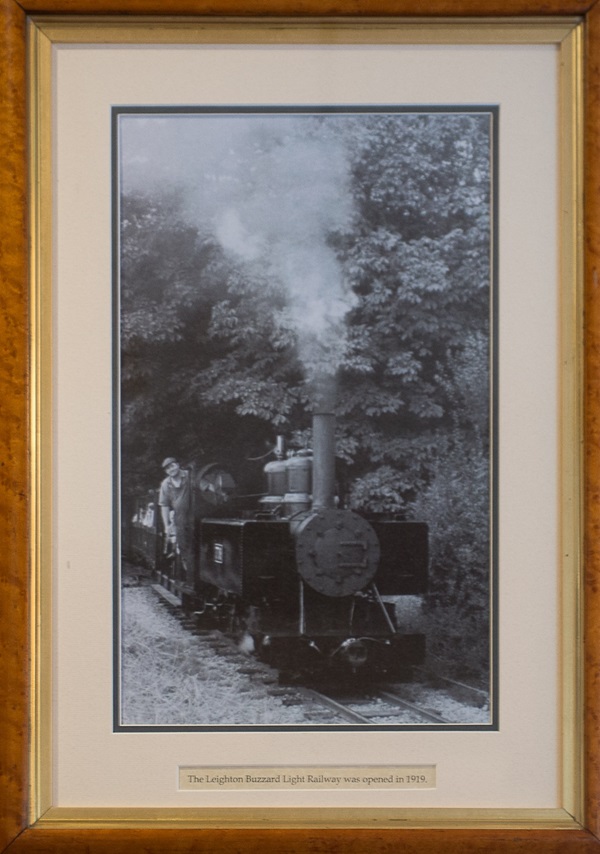
Signage and text about Lipton’s Tea.
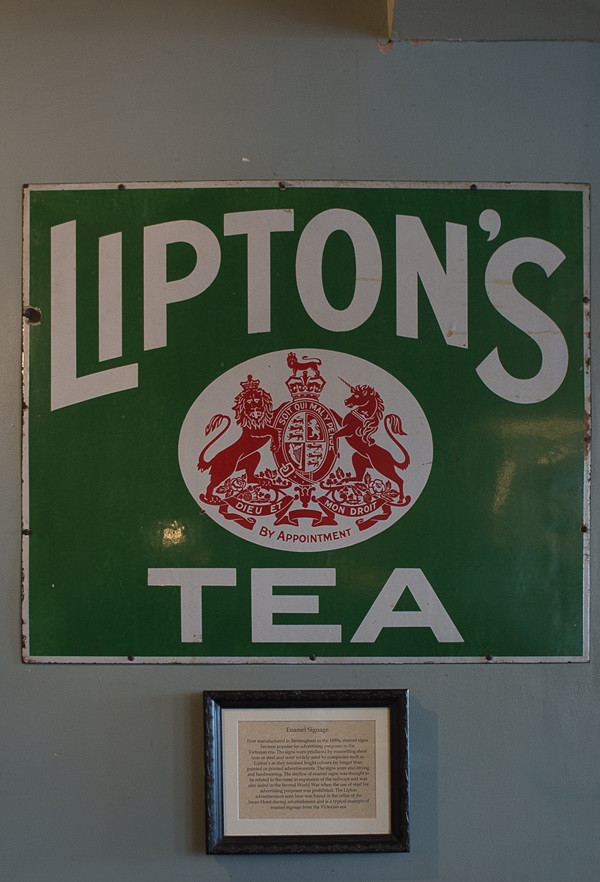
The text reads: First Manufactured in Birmingham in the 1880s, enamel signs became popular for advertising purposes in the Victorian era. The signs were produced by enamelling sheet iron or steel and were widely used by companies such as Lipton’s as they retained bright colours far longer than painted or printed advertisements. The signs were also strong and hardwearing. The decline of enamel signs was thought to be related to the cease in expansion of railways and was also aided in the Second World War when the use of steel for advertising propose was prohibited. The Lipton advertisement seen here was found in the cellar of the Swan Hotel during refurbishment and is a typical example of enamel signage from the Victorian era.
A photograph outside The Swan recorded around 1910. The balcony over the porch was often used to address public meetings.
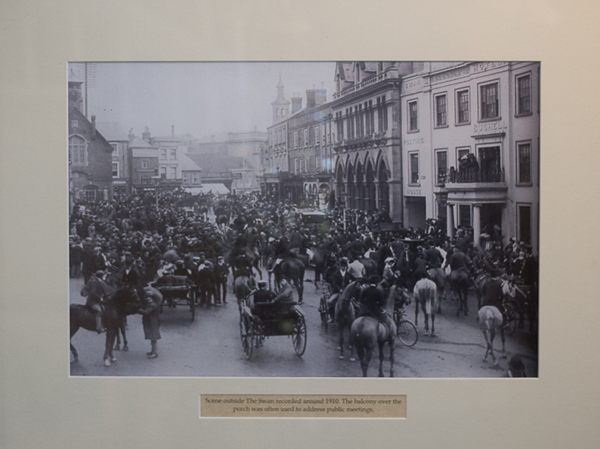
Dating from 1600 but refronted in the early 19th century, The Swan public house was one of the Leighton’s great coaching inns
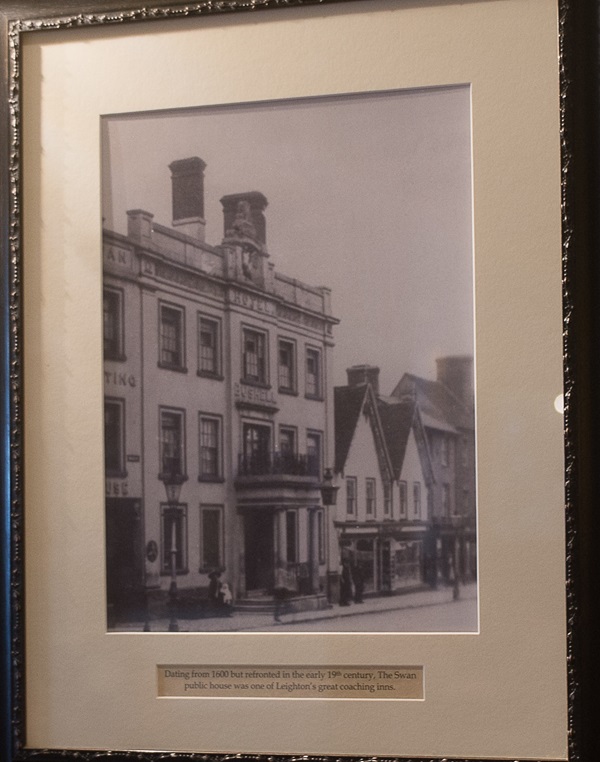
A photograph of All Saints Church and church gardens in the 1890s.
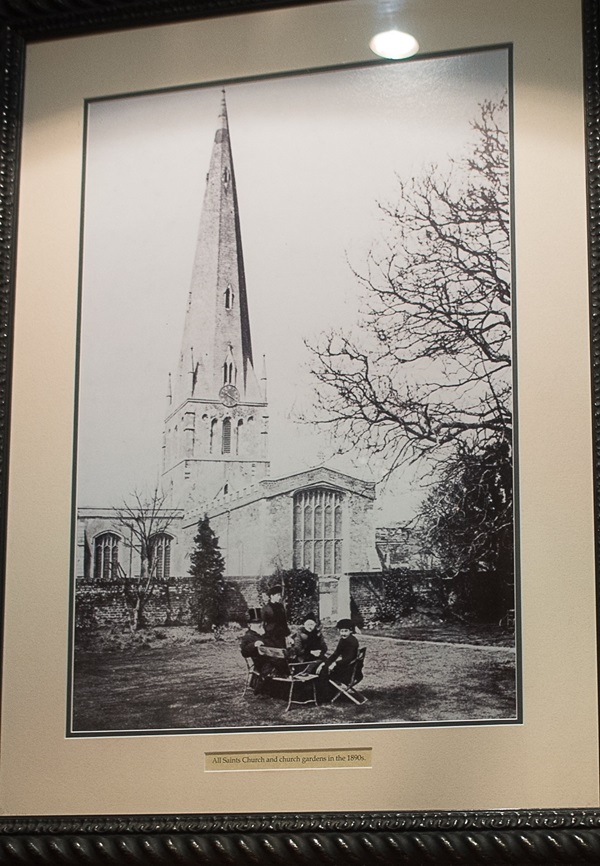
A photograph of Market day outside, The Swan Hotel 1890.
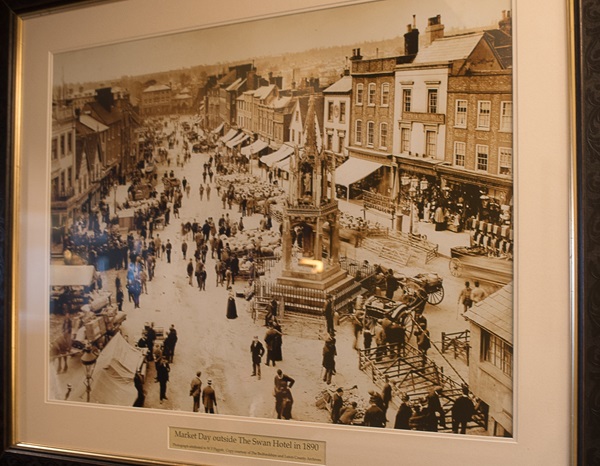
If you have information on the history of this pub, then we’d like you to share it with us. Please e-mail all information to: pubhistories@jdwetherspoon.co.uk